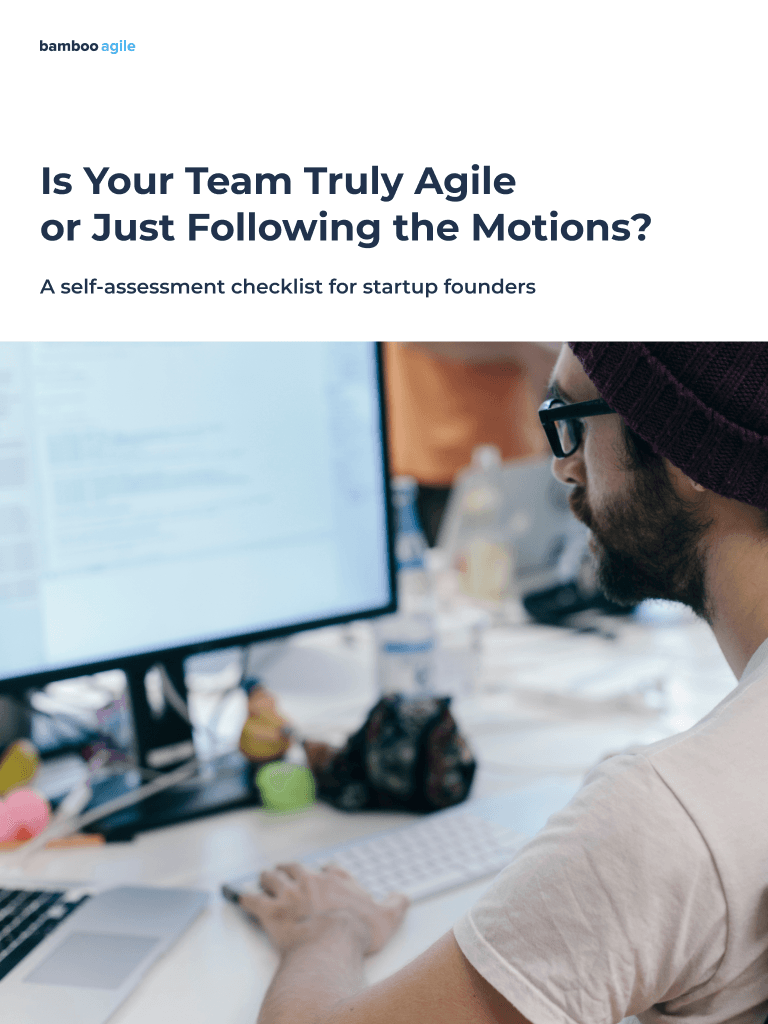Diggle is a web platform that allows its users to create presentations, surveys, tests, and analytical reports that can be accessed through any device. It’s a powerful solution that facilitates active engagement, discussion, and meaningful feedback.
About the Project
Overview:
Challenge
The client approached Bamboo Agile in January 2022. They had a free beta version of the Diggle project already available to a couple of customers. The client wanted our specialists to redesign the interface, as well as expand the software with new features.
The core goal was to improve the solution as a whole in order to make it a viable paid product. This meant boosting Diggle’s performance and efficiency, adding more sophisticated functionality, and attracting new clients.
Our client, SPECIFIQUE NORGE AS, is a Norwegian company, specialising in developing tailored learning processes for businesses. Check out their website to learn more about their services and ongoing projects.
Solution
Diggle allows users to create questions for their audience to discuss. There is a large variety of available question types, with scales, videos, and iceberg charts, just to name a few. Said questions can be grouped into a series of slides not unlike a presentation.
The questions can be answered from any device with internet connection, and all interactions can be tracked and displayed in real time. Users are then able to share and analyse the results in an easily digestible format.
Technologies we used:
Node.js, Angular, MySQl



Key Features
Diggle covers all the question types you may ever need. The final version of the solution is planned to contain 13 kinds of basic questions, including:
- Multiple choice (choose one option);
- Multiple response (choose several options);
- Open-ended;
- Poll;
- Select order;
- True or false;
- Word cloud;
- Choose image;
- Scales;
- Dilemma (scale-based with explanation);
- Iceberg;
- Info slide (e.g. for video materials);
- Register (to log info about the participant).
And this is just the basic selection.
Diggle also allows for more complex types of slides. The following three in particular are perfect for brainstorming sessions.
- Generate and vote. This allows participants to submit their ideas and vote on the ones they like the most.
- Generate, vote, and explain. Works the same way, but asks participants to explain their votes.
- Ideaflow. Similarly to the previous two options, ideaflow helps with idea submission and voting, but organises said ideas into set categories.
These provide a simple and straightforward way to organise feedback and set priorities within a team, classroom, or any other group.
Users can have participants complete questionnaires in real time or at their own pace. Additionally, Diggle supports lock screens in-between questions to have participants pause and wait for further instructions when necessary.
Much like with questions, Diggle is very flexible with how results of any session or survey can be presented.
- Horizontal and vertical barcharts;
- Image and imageless barcharts;
- Barcharts arranged as a popularity list;
- Gauges;
- Podiums;
- Individual answers;
- Walls of text (multiple answers on the same screen);
- Spider charts;
- Word clouds.
The results can be easily downloaded and/or shared across all devices with internet access.
Development
Our team was made up of a scrum master, a delivery manager, a UI/UX designer, three developers, a DevOps, and a QA specialist. The client side had the Product Owner, tech specialists, full stack developers, and DevOps of their own.
The team received tasks from the client, which were then discussed and prioritised. Bamboo Agile developers gave feedback on said tasks and actively suggested alternative solutions when deemed appropriate, which was something the client noted as especially helpful.
The communication process was organised via a combination of Slack, Jira, and Google Meet. The project itself was primarily built with Express (knex), PostgreSQL, and Redis technologies. Every two weeks, the team showcased the newly developed features to the client with screen demonstrations and detailed discussion.
Our developers were always on call, and were able to consistently and quickly respond to urgent requests at any time. This principle of addressing issues as soon as they arose has made for a very smooth development process overall.
Results
Bamboo Agile has upgraded the application’s UI, added a great number of features, and optimised the solution’s performance across the board. The new additions were positively received by the client and end users alike.
Currently, the collaboration continues as the client wishes to expand the platform further with new functionality, including features for PRO users, templates, language overlays, and other improvements.









